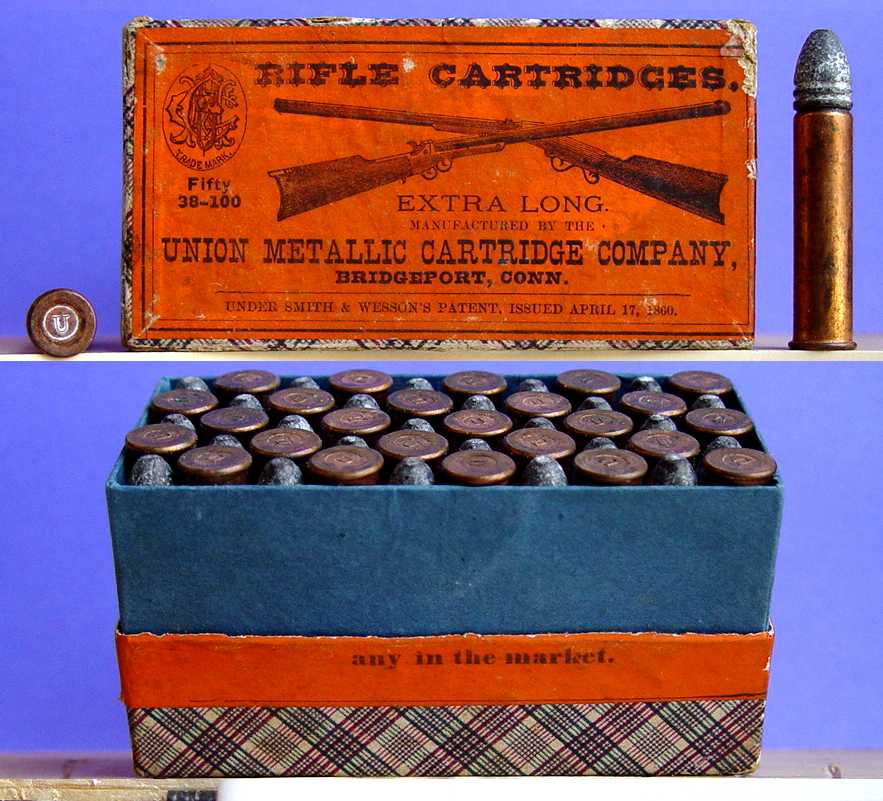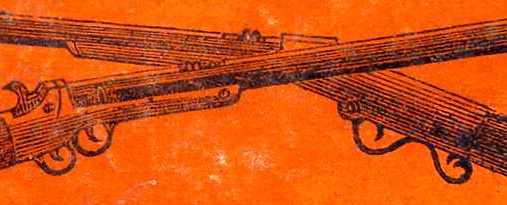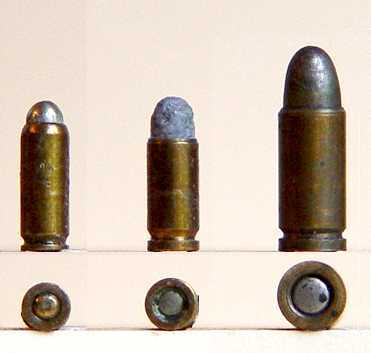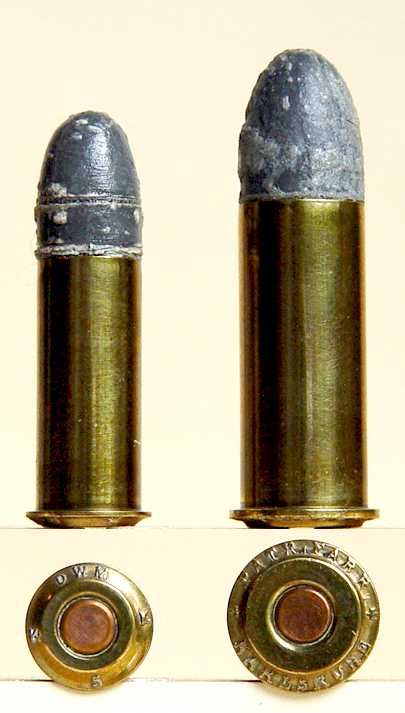| Contents
Home
General
Info
Ordering
Info
Contact us
Cartridge
Lists
Patent & Miscellaneous
Rim Fire
Center Fire Pistol
Center Fire Rifle
Metric Rimfire,
Pistol&Rifle
British Pistol and Rifle
Shotgun Shells
Posters
This Month's Picture Page
Prior Picture Pages:
*
September 2003
*
October 2003
*
November 2003
*
December 2003
*
January 2004
*
February 2004
*
March 2004
*
April 2004
*
May 2004
*
June 2004
*
July 2004
*
August 2004
*
September 2004
*
October 2004
*
November 2004
*
December
2004
*
January 2005
*
February
2005
*
March
2005
*
April
2005
*
Links to Other Sites
Cartridge Collectors Organizations:
IAA
ECRA
SAAACA
Auctions:
Auction
Arms
E-Bay
Ward's Collectibles
Sold USA
Books:
Armory
Publications
WCF Publications
Other Collector's Sites:
Curtis Steinhauer
|
Home of the Old Ammo Guy's Virtual
Cartridge Trading Table
Picture
Page
May
2005
Another great UMC box........
 Last
month, I led this page off with a full box of UMC .41 long rimfire
cartridges that had the raised 'U' headstamp. Here's another beautiful example of
that company's early rimfire boxes, this one in .38 Extra Long, also with
that elusive raised 'U' headstamp. This cartridge was introduced in 1869 for the
Ballard Sporting Rifle, as manufactured at that time by the Brown
Manufacturing Company of Newburyport, Massachusetts. As a result, it is
often referred to as the .38 Extra Long Ballard, though other gun makers
produced rifles that used this cartridge, included E. Remington, Frank
Wesson, and O. M. Robinson. Illustrated on this label are a Wesson two
trigger tip up action rifle and a Ballard sporting rifle. These rifles were
probably copied from period catalog illustrations that were made available
to the engraver. Closer examination reveals the Wesson rifle to be a first
type, with the slotted link that limits Last
month, I led this page off with a full box of UMC .41 long rimfire
cartridges that had the raised 'U' headstamp. Here's another beautiful example of
that company's early rimfire boxes, this one in .38 Extra Long, also with
that elusive raised 'U' headstamp. This cartridge was introduced in 1869 for the
Ballard Sporting Rifle, as manufactured at that time by the Brown
Manufacturing Company of Newburyport, Massachusetts. As a result, it is
often referred to as the .38 Extra Long Ballard, though other gun makers
produced rifles that used this cartridge, included E. Remington, Frank
Wesson, and O. M. Robinson. Illustrated on this label are a Wesson two
trigger tip up action rifle and a Ballard sporting rifle. These rifles were
probably copied from period catalog illustrations that were made available
to the engraver. Closer examination reveals the Wesson rifle to be a first
type, with the slotted link that limits
 upward travel of the barrel on the
right side of the frame, visible in the blowup of the illustration on the
side of the barrel just above the front trigger. The first type Wesson was
produced between 1859 and 1864, though these dates have no bearing on when
the label was engraved. Characteristics of the Ballard reveal it to be a
sporting rifle, but are not detailed enough to narrow it down from among the
several makers and the many models that were produced. upward travel of the barrel on the
right side of the frame, visible in the blowup of the illustration on the
side of the barrel just above the front trigger. The first type Wesson was
produced between 1859 and 1864, though these dates have no bearing on when
the label was engraved. Characteristics of the Ballard reveal it to be a
sporting rifle, but are not detailed enough to narrow it down from among the
several makers and the many models that were produced.
As I pointed out last month, the raised headstamp indicates production
between 1877 and 1878. Other early characteristics are the square corners
and plaid pattern on the box, and the UMC Co 'dog's head' logo and Smith & Wesson
1869 patent on the label. The blue colored inner portion of the box seems a
little unusual to me, but is original.
 Marked lightly in pencil
on the bottom of the box are three letters, which appear to be 'nai' or 'nir'
in script, most likely representing the wholesale cost of the ammunition,
which would have been about $25 per 1000 rounds in this caliber, or $1.25
per box of 50. These markings were a fairly common practice among retailers, who
selected a word with 10 different letters to represent the numbers 0 through
9, using the appropriate letters to code the cost. This allowed the retailer
to know at a glance exactly what he paid for an item, which was useful when
offering a customer a discount off of a marked price. Below this code is
what appears to be a price of 65 cents. However, based on the wholesale cost
and considering that cartridges were often sold individually out of a box, I
suspect it could possibly be 6.5, or 6 1/2 cents, per cartridge. Marked lightly in pencil
on the bottom of the box are three letters, which appear to be 'nai' or 'nir'
in script, most likely representing the wholesale cost of the ammunition,
which would have been about $25 per 1000 rounds in this caliber, or $1.25
per box of 50. These markings were a fairly common practice among retailers, who
selected a word with 10 different letters to represent the numbers 0 through
9, using the appropriate letters to code the cost. This allowed the retailer
to know at a glance exactly what he paid for an item, which was useful when
offering a customer a discount off of a marked price. Below this code is
what appears to be a price of 65 cents. However, based on the wholesale cost
and considering that cartridges were often sold individually out of a box, I
suspect it could possibly be 6.5, or 6 1/2 cents, per cartridge.
A couple of the little ones.......
 Here
are the two smallest automatic handgun cartridges that were made
commercially, the 2.7mm and 3mm Kolibri. The 2.7mm, on the left in the
picture, was introduced in 1913 by Georg Grabner, an Austrian. It's
.formidable .106 caliber bullet weighs about 3 grains, producing a muzzle
energy of 3 foot pounds. The Kolibri pistol was intended as a ladies
self defense weapon; its pipsqueak cartridge tells us a lot about how much
the men valued their women in the early 1900s. The ineffectiveness of the
2.7mm cartridge was pointed out almost immediately and steps were taken to
improve its ballistics, resulting in the development of the 3mm cartridge,
the middle cartridge in the picture. The size of the bullet was increased to
approximately ..120 caliber, weighing in at a hefty 5.25 grains. That the
'improved' cartridge was not embraced by the shooting public is apparent, as
production did not continue after World War I. Examples of both the pistol
and its cartridges are quite rare today. Incidentally, the large cartridge on the
right is the 4.25 Lilliput, a ballistic powerhouse, comparatively speaking. Here
are the two smallest automatic handgun cartridges that were made
commercially, the 2.7mm and 3mm Kolibri. The 2.7mm, on the left in the
picture, was introduced in 1913 by Georg Grabner, an Austrian. It's
.formidable .106 caliber bullet weighs about 3 grains, producing a muzzle
energy of 3 foot pounds. The Kolibri pistol was intended as a ladies
self defense weapon; its pipsqueak cartridge tells us a lot about how much
the men valued their women in the early 1900s. The ineffectiveness of the
2.7mm cartridge was pointed out almost immediately and steps were taken to
improve its ballistics, resulting in the development of the 3mm cartridge,
the middle cartridge in the picture. The size of the bullet was increased to
approximately ..120 caliber, weighing in at a hefty 5.25 grains. That the
'improved' cartridge was not embraced by the shooting public is apparent, as
production did not continue after World War I. Examples of both the pistol
and its cartridges are quite rare today. Incidentally, the large cartridge on the
right is the 4.25 Lilliput, a ballistic powerhouse, comparatively speaking.
 For a better perspective of just how small the Kolibri
cartridges are, this second picture shows the actual size of all three
cartridges. Imagine being pinned down by the bad guys, and trying to reload
the magazine of your backup gun with a handful of these
little guys. For a better perspective of just how small the Kolibri
cartridges are, this second picture shows the actual size of all three
cartridges. Imagine being pinned down by the bad guys, and trying to reload
the magazine of your backup gun with a handful of these
little guys.
A couple of Mauser revolver cartridges..........
 Pictured
here are two of the three cartridges made for the Mauser Model 1878 "Zig-Zag"
revolver, which was made in three calibers, 7.6mm, 9mm and 10.6mm. On
the left is the 7.6mm cartridge, made by Deutsche Waffen u.
Munitionsfabriken of Karlsruhe, Germany and with the raised headstamp DWM
K K 5. On the right is the 9mm, this one made by Deutsche
Metallpatronenfabrik Lorenz of Karlsruhe, which was a predecessor of DWM. It
has the raised headstamp PATR.FABR. + KARLSRUHE +, and dates from
before 1889, when the company name changed to Deutsche Metallpatronenfabrik
Karlsruhe (DM-K). Pictured
here are two of the three cartridges made for the Mauser Model 1878 "Zig-Zag"
revolver, which was made in three calibers, 7.6mm, 9mm and 10.6mm. On
the left is the 7.6mm cartridge, made by Deutsche Waffen u.
Munitionsfabriken of Karlsruhe, Germany and with the raised headstamp DWM
K K 5. On the right is the 9mm, this one made by Deutsche
Metallpatronenfabrik Lorenz of Karlsruhe, which was a predecessor of DWM. It
has the raised headstamp PATR.FABR. + KARLSRUHE +, and dates from
before 1889, when the company name changed to Deutsche Metallpatronenfabrik
Karlsruhe (DM-K).
The revolver received a patent on March 7, 1878, and derives its "zig-zag"
name from the unconventional way the cylinder is rotated between shots.
Rather than having the Colt-style ratchet on the rear of the cylinder that
was copied by most revolver makers, it has grooves cut into the outside of
the cylinder, as can be clearly seen in the picture below, which are engaged
by an indexing pin that travels forward and backward as the gun is operated.
>
>
>
>
.>
>
|

 Last
month, I led this page off with a full box of UMC .41 long rimfire
cartridges that had the raised 'U' headstamp. Here's another beautiful example of
that company's early rimfire boxes, this one in .38 Extra Long, also with
that elusive raised 'U' headstamp. This cartridge was introduced in 1869 for the
Ballard Sporting Rifle, as manufactured at that time by the Brown
Manufacturing Company of Newburyport, Massachusetts. As a result, it is
often referred to as the .38 Extra Long Ballard, though other gun makers
produced rifles that used this cartridge, included E. Remington, Frank
Wesson, and O. M. Robinson. Illustrated on this label are a Wesson two
trigger tip up action rifle and a Ballard sporting rifle. These rifles were
probably copied from period catalog illustrations that were made available
to the engraver. Closer examination reveals the Wesson rifle to be a first
type, with the slotted link that limits
Last
month, I led this page off with a full box of UMC .41 long rimfire
cartridges that had the raised 'U' headstamp. Here's another beautiful example of
that company's early rimfire boxes, this one in .38 Extra Long, also with
that elusive raised 'U' headstamp. This cartridge was introduced in 1869 for the
Ballard Sporting Rifle, as manufactured at that time by the Brown
Manufacturing Company of Newburyport, Massachusetts. As a result, it is
often referred to as the .38 Extra Long Ballard, though other gun makers
produced rifles that used this cartridge, included E. Remington, Frank
Wesson, and O. M. Robinson. Illustrated on this label are a Wesson two
trigger tip up action rifle and a Ballard sporting rifle. These rifles were
probably copied from period catalog illustrations that were made available
to the engraver. Closer examination reveals the Wesson rifle to be a first
type, with the slotted link that limits
 upward travel of the barrel on the
right side of the frame, visible in the blowup of the illustration on the
side of the barrel just above the front trigger. The first type Wesson was
produced between 1859 and 1864, though these dates have no bearing on when
the label was engraved. Characteristics of the Ballard reveal it to be a
sporting rifle, but are not detailed enough to narrow it down from among the
several makers and the many models that were produced.
upward travel of the barrel on the
right side of the frame, visible in the blowup of the illustration on the
side of the barrel just above the front trigger. The first type Wesson was
produced between 1859 and 1864, though these dates have no bearing on when
the label was engraved. Characteristics of the Ballard reveal it to be a
sporting rifle, but are not detailed enough to narrow it down from among the
several makers and the many models that were produced.  Marked lightly in pencil
on the bottom of the box are three letters, which appear to be 'nai' or 'nir'
in script, most likely representing the wholesale cost of the ammunition,
which would have been about $25 per 1000 rounds in this caliber, or $1.25
per box of 50. These markings were a fairly common practice among retailers, who
selected a word with 10 different letters to represent the numbers 0 through
9, using the appropriate letters to code the cost. This allowed the retailer
to know at a glance exactly what he paid for an item, which was useful when
offering a customer a discount off of a marked price. Below this code is
what appears to be a price of 65 cents. However, based on the wholesale cost
and considering that cartridges were often sold individually out of a box, I
suspect it could possibly be 6.5, or 6 1/2 cents, per cartridge.
Marked lightly in pencil
on the bottom of the box are three letters, which appear to be 'nai' or 'nir'
in script, most likely representing the wholesale cost of the ammunition,
which would have been about $25 per 1000 rounds in this caliber, or $1.25
per box of 50. These markings were a fairly common practice among retailers, who
selected a word with 10 different letters to represent the numbers 0 through
9, using the appropriate letters to code the cost. This allowed the retailer
to know at a glance exactly what he paid for an item, which was useful when
offering a customer a discount off of a marked price. Below this code is
what appears to be a price of 65 cents. However, based on the wholesale cost
and considering that cartridges were often sold individually out of a box, I
suspect it could possibly be 6.5, or 6 1/2 cents, per cartridge.  Here
are the two smallest automatic handgun cartridges that were made
commercially, the 2.7mm and 3mm Kolibri. The 2.7mm, on the left in the
picture, was introduced in 1913 by Georg Grabner, an Austrian. It's
.formidable .106 caliber bullet weighs about 3 grains, producing a muzzle
energy of 3 foot pounds. The Kolibri pistol was intended as a ladies
self defense weapon; its pipsqueak cartridge tells us a lot about how much
the men valued their women in the early 1900s. The ineffectiveness of the
2.7mm cartridge was pointed out almost immediately and steps were taken to
improve its ballistics, resulting in the development of the 3mm cartridge,
the middle cartridge in the picture. The size of the bullet was increased to
approximately ..120 caliber, weighing in at a hefty 5.25 grains. That the
'improved' cartridge was not embraced by the shooting public is apparent, as
production did not continue after World War I. Examples of both the pistol
and its cartridges are quite rare today. Incidentally, the large cartridge on the
right is the 4.25 Lilliput, a ballistic powerhouse, comparatively speaking.
Here
are the two smallest automatic handgun cartridges that were made
commercially, the 2.7mm and 3mm Kolibri. The 2.7mm, on the left in the
picture, was introduced in 1913 by Georg Grabner, an Austrian. It's
.formidable .106 caliber bullet weighs about 3 grains, producing a muzzle
energy of 3 foot pounds. The Kolibri pistol was intended as a ladies
self defense weapon; its pipsqueak cartridge tells us a lot about how much
the men valued their women in the early 1900s. The ineffectiveness of the
2.7mm cartridge was pointed out almost immediately and steps were taken to
improve its ballistics, resulting in the development of the 3mm cartridge,
the middle cartridge in the picture. The size of the bullet was increased to
approximately ..120 caliber, weighing in at a hefty 5.25 grains. That the
'improved' cartridge was not embraced by the shooting public is apparent, as
production did not continue after World War I. Examples of both the pistol
and its cartridges are quite rare today. Incidentally, the large cartridge on the
right is the 4.25 Lilliput, a ballistic powerhouse, comparatively speaking.
 Pictured
here are two of the three cartridges made for the Mauser Model 1878 "Zig-Zag"
revolver, which was made in three calibers, 7.6mm, 9mm and 10.6mm. On
the left is the 7.6mm cartridge, made by Deutsche Waffen u.
Munitionsfabriken of Karlsruhe, Germany and with the raised headstamp DWM
K K 5. On the right is the 9mm, this one made by Deutsche
Metallpatronenfabrik Lorenz of Karlsruhe, which was a predecessor of DWM. It
has the raised headstamp PATR.FABR. + KARLSRUHE +, and dates from
before 1889, when the company name changed to Deutsche Metallpatronenfabrik
Karlsruhe (DM-K).
Pictured
here are two of the three cartridges made for the Mauser Model 1878 "Zig-Zag"
revolver, which was made in three calibers, 7.6mm, 9mm and 10.6mm. On
the left is the 7.6mm cartridge, made by Deutsche Waffen u.
Munitionsfabriken of Karlsruhe, Germany and with the raised headstamp DWM
K K 5. On the right is the 9mm, this one made by Deutsche
Metallpatronenfabrik Lorenz of Karlsruhe, which was a predecessor of DWM. It
has the raised headstamp PATR.FABR. + KARLSRUHE +, and dates from
before 1889, when the company name changed to Deutsche Metallpatronenfabrik
Karlsruhe (DM-K). 